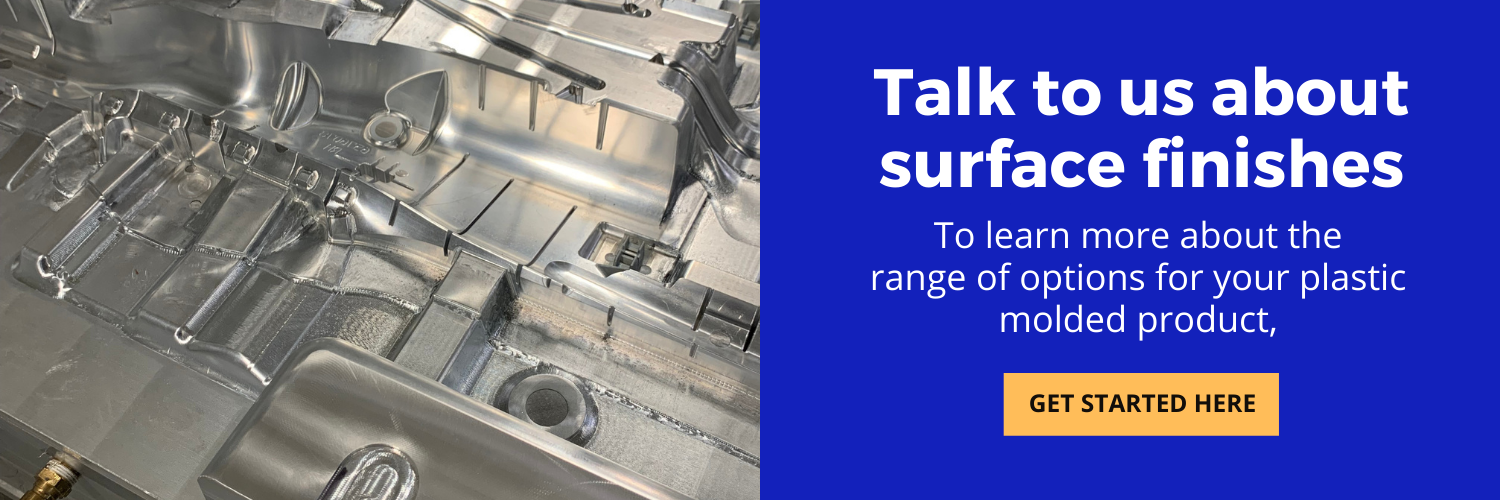You’ve designed your part, and worked with us to find the right materials and the right molding process to manufacture it, but there’s one thing to figure out before you can proceed: what sort of surface(s) should it have? It might seem like a small detail in the molding process, but you want to do it right. And it’s an integral part of the mold-making process, not just an afterthought. Here’s a handy breakdown of what types of surface finish are available so you can make the wisest decision.
The Four Categories of Plastic Finishes
The Plastics Industry Association has four categories for describing the cosmetic quality of finishes. These categories are divided further into grades. The finer and more involved the grade, the higher the cost.
Shiny
Category A is a very high gloss that comes from buffing with a fine diamond powder that’s suspended in oil. It’s applied with a rotary tool moving in a random pattern to avoid clear pattern marks. It’s perfect for reflective surfaces. This category is further subdivided into grades A-1, 2, and 3 with decreasing levels of polish.
Semi-Gloss
Category B is a semi-gloss finish that’s made with ultra-fine sandpaper. It’s applied in a back and forth pattern that is more visible than that in category A but can help hide any blemishes from manufacturing. It’s further subdivided into grades B-1, 2, and 3.
Matte to dull
Category C is less glossy than B and is polished with fine stone powders or grit sanding stones. Its surface is rougher than B due to the harsher sanding process. It easily erases any marks from manufacturing. This category subdivides into grades C-1, 2, and 3.
Rough
Category D finishes are made with blasting using sand, glass beads, or aluminum oxide grains. While it should be random and without a visible pattern on the surface, it results in a dull, flat finish. Again, this category subdivides into grades D-1, 2, and 3.
Note that each of these grades also has what’s called an RA - or roughness average - value. This is another way of classifying surfaces based on the arithmetic average of surface heights. For example, A-1 has an RA of about zero to one, while D-3 is around 190 to 230.
Aesthetics and Functionality
Different finishes have different looks. If you want something looking extra clean and smooth - maybe something consumer-facing - you’ll want a glossy, finer finish. If the look of your plastic part isn’t that important, you’ll want a rougher - and thus, cheaper - finish.
A more textured surface can not only be an aesthetic asset, but it can also help hide any lines or blemishes from the molding process. A textured surface might also hold paint better than a glossy one as well as be better for gripping.
The finish used on your plastic part shouldn’t be an afterthought. You’ll want to consider it along with every part of the molding process. But don’t get overwhelmed. Talk with us about what your options are and what will make you happiest with your end product.


